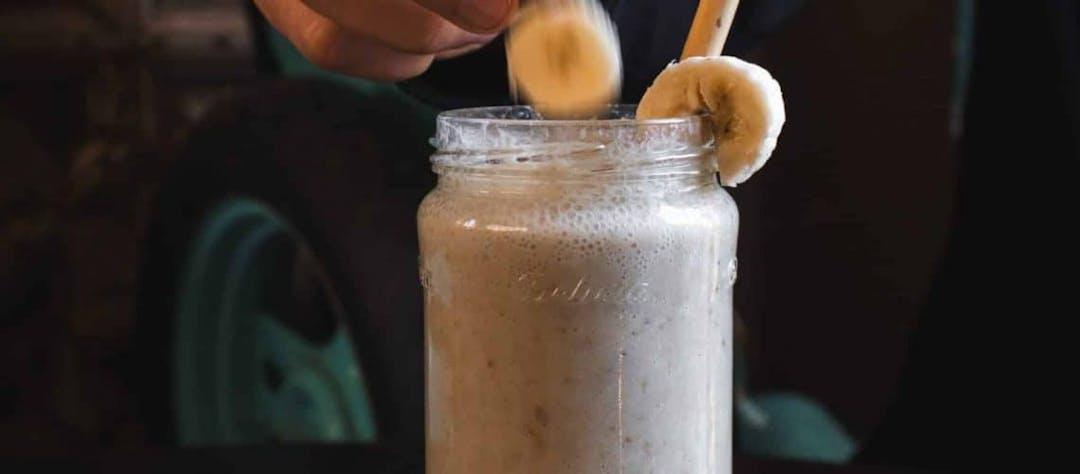


Find foods you can eat.
How to Incorporate Calcium on a Dairy-Free Diet
Published on September 16, 2021We all grew up being told that we need to drink milk in order to have strong bones, but is that really true? While milk and other dairy products are good sources of calcium, they are not the only places where we can find this important mineral. If you avoid dairy due to an allergy, intolerance, personal preference, or if you’re just looking for ways to diversify your calcium intake, keep reading!
Why is calcium important?
Bone health
Calcium plays several critical roles in our bodies, one of which is building and maintaining our bones and teeth. Calcium is a major component of hydroxyapatite crystals, the mineral portion of bone that gives it its rigidity.
Over 99% of the total stored calcium in our body is in our bones. Our body likes to keep our blood calcium level in a very tight range, so when our blood calcium level drops too low, calcium is pulled from our bones. This brings our blood calcium level within range, but if we aren’t getting enough calcium through our diet, we can lose bone mass over time. Our bones are also continuously remodeling in order to repair damage, and in children, change size during periods of growth.
Nervous transmission and blood pressure
Calcium is needed for proper nervous system function. Specifically, calcium is involved in nerve transmission. Nerve endings release calcium ions which then bind to proteins, telling your muscle cells to contract or relax. Similarly, we need calcium for our heart to contract and pump blood. By helping our blood vessels to relax and contract, consuming sufficient calcium also helps to promote normal blood pressure.
Colon cancer prevention
Consuming adequate calcium has been associated with a lower risk for developing colorectal cancer, although the mechanisms behind this phenomenon are not entirely understood.
How do you know if you’re getting enough calcium?
The 2015-2020 Dietary Guidelines for Americans identified calcium as one of the 5 nutrients of public health concern for Americans, meaning it’s commonly under-consumed and there are adverse health effects associated with its underconsumption. The Recommended Dietary Allowance (RDA) of calcium for adults ages 19-50 is 1,000 mg per day. This increases to 1,200 mg per day for women over 50 and for both men and women over 70. For reference, a glass of milk has about 300 mg of calcium.
In the U.S., according to CDC data, osteoporosis is on the rise and over 40% of US adults ages 50 and older are estimated to have low bone mass, a precursor to osteoporosis. Osteoporosis is a condition that occurs when the rate of new bone creation is slower than the rate at which bone is being broken down. Bones become brittle and fragile, potentially leading to fractures or breaks. Osteoporosis is more likely to occur in those who have a low calcium intake. Some additional risk factors for developing osteoporosis include:
- Malabsorptive conditions like active Inflammatory Bowel Disease and certain gastrointestinal surgeries
- Overactive thyroid (also called “hyperactive” thyroid)
- Long-term corticosteroid treatment
- Certain seizure medications
- Some acid reflux medications
- Consuming a diet very high in protein and sodium
- Excessive alcohol consumption
- Sedentary lifestyle
- Eating disorders
- Having a small body frame size
- Family history of osteoporosis
- Older age
- Female
- Those of Caucasian or Asian descent
If you check off one or more of the above risk factors, don’t panic. The good news is that there is a lot we can do through diet and lifestyle to help keep our bones in tip-top shape. The best way to do this is to eat a variety of calcium-containing foods in sufficient amounts. It’s also important to get enough vitamin D through regular sunlight exposure, which is needed to properly absorb calcium. Additionally, regularly engaging in weight-bearing exercise puts stress on our bones, encouraging their growth and strength.
To find out more about how much calcium is in your bones, a blood test won’t be too helpful, since for the average healthy person, blood calcium levels are kept within a narrow range regardless of how much calcium you’re consuming. A dual-energy x-ray absorptiometry (DEXA) scan on the other hand, is a type of x-ray that measures bone density. This will provide the most insight into whether or not you’re getting enough calcium through your diet.
Non-dairy calcium sources
Milk and dairy products are usually the first foods that come to mind when we think of calcium. But for those avoiding dairy, there are still plenty of calcium-rich food options to choose from! These include:
Dark green vegetables
Dark green vegetables are full of calcium and those in the cruciferous family, like arugula, broccoli, bok choy, collard greens, kale, and mustard greens, are especially good sources of calcium. This is because the calcium they contain is highly absorbable by our bodies. Vegetables in the cruciferous family lack certain calcium absorption-blocking plant compounds found in many other calcium-rich plants, such as oxalates and phytates. In fact, 2 cups of cooked broccoli contains the same amount of bioavailable calcium as a glass of milk. While other veggies like spinach and swiss chard contain a good amount of calcium, they are also high in oxalic acid, which makes this calcium less available to our bodies for absorption.
Fruit
Fruits such as figs, oranges, kiwifruit, and blackberries are rich in calcium. One cup of fresh figs, for example, contains an impressive 250 mg of calcium and one orange provides around 75 mg of calcium. For 50 mg of calcium, you can snack on a cup of blackberries or 2 kiwifruit.
Nuts and seeds
Out of all the nuts, almonds are highest in calcium, providing around 75 mg for a handful.
Seeds are frequently overlooked calcium powerhouses. Chia, poppy, and sesame seeds are highest in calcium. Just 2 tablespoons of tahini, a paste made from sesame seeds, contains more calcium than a glass of milk. It makes for a delicious salad dressing or sauce when mixed with lemon juice, water, and a pinch of salt. Or try whipping up a chia seed pudding with some non-dairy milk, fruit, and a drizzle of honey for a tasty snack or breakfast. The chia seeds contain just under 200 mg of calcium per 2 tablespoon serving on their own, and when you add a calcium-fortified milk alternative and some blackberries to the mix, you’ll get an extra 275 mg. Pretty impressive calcium stats! Try sprinkling poppy seeds into baked goods, salad dressings, or on fresh fruit for added nutrition. 1 tablespoon will provide you with over 100 mg of calcium.
Canned fish eaten with bones
If you don’t avoid fish, canned fish that are eaten with bones, like sardines or canned salmon, are excellent sources of calcium. One serving of canned sardines or salmon contains about 200 mg of calcium in addition to some vitamin D, aiding in its absorption. Canned fish is also very inexpensive, shelf-stable, and a great way to increase your intake of heart-healthy omega-3 fatty acids!
Tofu made with calcium sulfate and tempeh
Aside from being a tasty and versatile plant-based protein option, tofu made with calcium sulfate as a coagulant is rich in calcium. Just half a cup of tofu contains even more calcium than a glass of milk. Try adding some tofu to a stir fry with broccoli and bok choy for the ultimate calcium-rich meal, sans dairy.
Think of tempeh as tofu’s lesser-known, fermented cousin. One cup will give you just under 200 mg of calcium. Try baking it with your favorite marinade, or sauté it with some olive oil and spices.
Calcium-fortified, non-dairy milks
If you’re looking for a calcium-rich milk substitute, there is certainly no shortage of options. From almond, oat, soy, cashew, rice, and even pea milk—you have plenty of tasty non-dairy milks to choose from. Not all milk alternatives are created equally, though. Be sure to check the label to make sure that it’s calcium-fortified. Some varieties are also fortified with vitamin D as an added bonus. If you’re looking for one that meets your dietary needs, check out FIG’s mobile app (still in beta) to help you identify dairy-free foods!
Winter squash and sweet potato
Orange starchy vegetables like sweet potatoes, butternut squash, and acorn squash are surprisingly rich in calcium. One sweet potato baked with the skin contains roughly 40 mg of calcium, a cup of cooked butternut squash contains over 80 mg, and a cup of cooked acorn squash has over 60 mg.
Should you take a calcium supplement?
As with most nutrients, it’s best to obtain our calcium through diet, as we absorb it best through food sources. That being said, individuals who are unable to obtain sufficient calcium through their diet may benefit from taking a supplement. If you’re concerned that you may not be getting enough calcium, working with a registered dietitian can be helpful. They will take a look at what you’re eating to better assess whether or not your intake is adequate. Based on your dietary needs, preferences, and restrictions, your dietitian can provide you with specific recommendations.
For those who require a calcium supplement, calcium citrate is the form that is generally best absorbed and can be taken with or without food. Our bodies only absorb about 500 mg of calcium at a time, so if you require a larger dose, it’s best to split it up into more than one dose, at least 4 hours apart.
Before beginning any supplement, it’s best to consult with your healthcare team to be sure that it’s safe and appropriate for you to do so.
Is it possible to consume too much calcium?
It’s very unlikely that you’ll consume too much calcium through food, but it is possible to consume too much calcium through supplements, especially if you’re taking high doses of both calcium and vitamin D. To prevent this from occurring, you’ll want to make sure that you aren’t getting more than 2,500 mg of calcium per day, as this can lead to adverse health consequences like constipation, kidney stones, impaired absorption of other minerals like iron and zinc, and even calcification of blood vessels. With that in mind, overdosing on calcium is rare and not a significant concern for the average person.
The bottom line
Calcium plays many important roles in our bodies. Although dairy is a good source of calcium, there are many dairy-free foods that provide just as much calcium. You may want to consider working with a registered dietitian to help ensure that you’re meeting your calcium needs.
Have you tried the Fig app? Tell Fig if you follow any complex diets or avoid any ingredients. Then, Fig will show you every product that fits your needs. You can also scan products at the grocery store to see if they work for you.
 What's the Difference Between Probiotics and Prebiotics?
What's the Difference Between Probiotics and Prebiotics? The Impact of Dietary Emulsifiers on Gut Health
The Impact of Dietary Emulsifiers on Gut Health